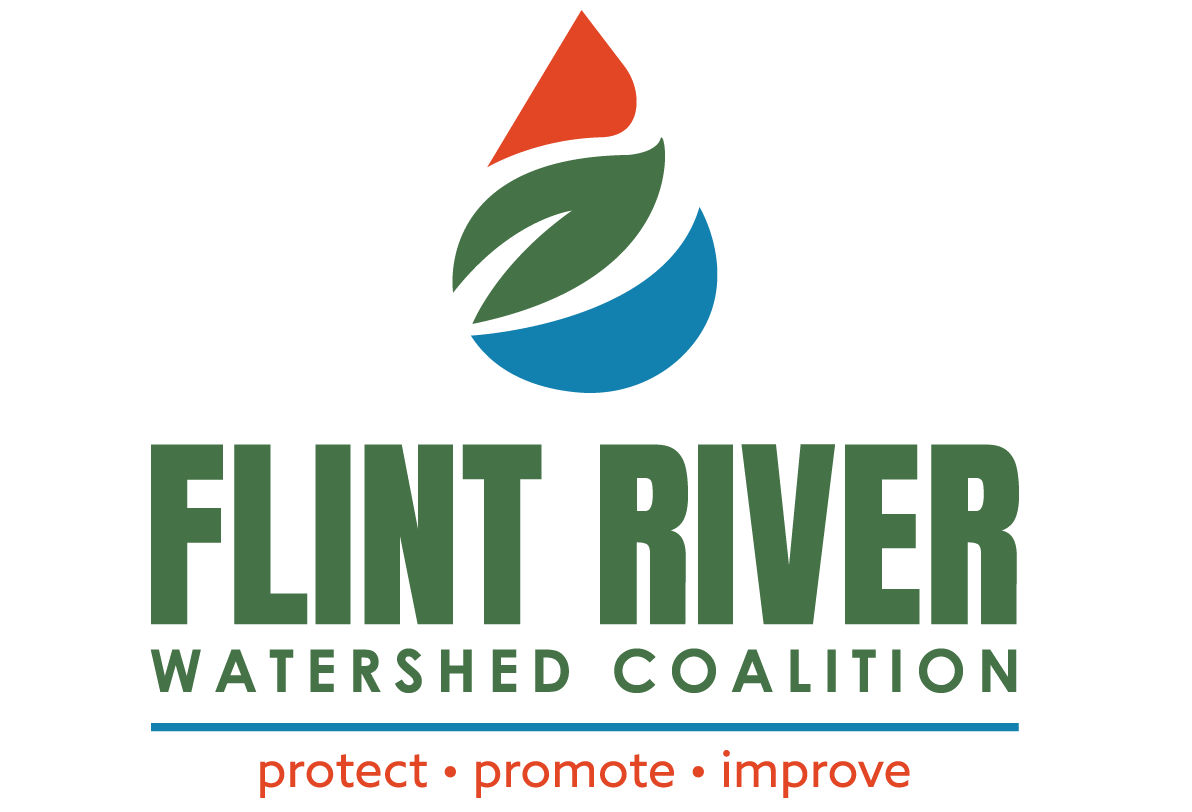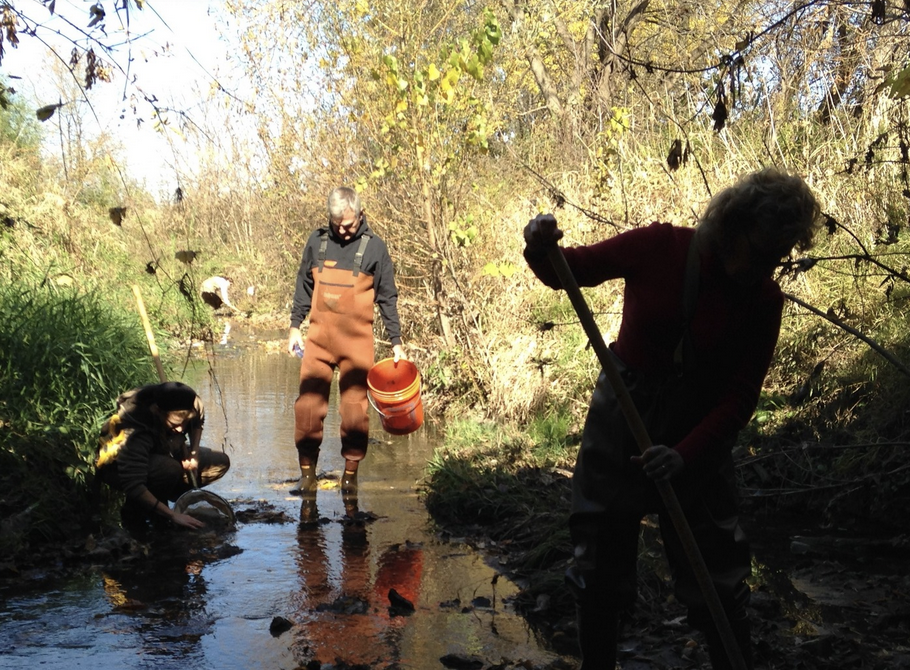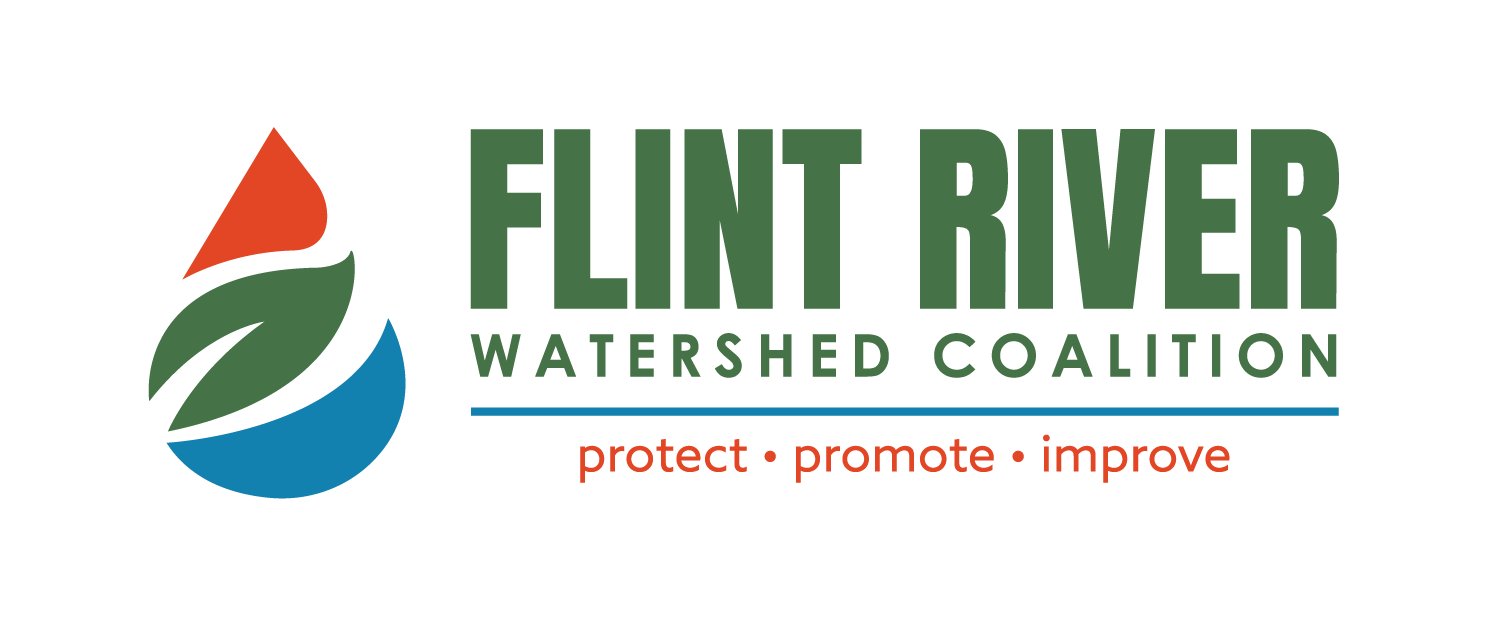Threats to the River
While the health of the river is much better than many believe, there are still threats that can and should be addressed. Nonpoint source pollution, PFAS/PFOS, invasive species, loss of wetlands, and urban development continue to negatively impact the Flint River.
Land Cover Impacts Water Quality
The Flint River watershed is currently dominated by agriculture (49%), followed by forested (16%), non-forested (15%), urban development (15%), wetland (3%), and water (1%) land cover. Human impacts on water quality persist throughout the watershed.
History Remains
When drainage channels, tiles, agricultural fields, and dams were added to the landscape these caused a dramatic change in river characteristics and water quality. Channelization and impoundments have reduced wetlands and contributed to an unstable flow within the river system. Channelization continues to alter the river. Unstable flows prevent the transportation of nutrients and increase erosion.
Why is the River Brown?
Erosion adds sediment to the waterway, removes streambank vegetation, and alters habitat along and within the river system. Additional sediment within a waterway also absorbs sunlight. This paired with the removal of plants along the stream banks increases the water temperature and decreases the suitability for some coldwater fish species and other organisms.
Industrial Impacts
Urban development throughout the watershed has also contributed to additional stress on the Flint River. Historically, unregulated discharges from industry and municipalities negatively impacted the water quality of the Flint River. This type of point source pollution has decreased over the last 50 years as policy and practices have changed. This impact will continue to improve as wastewater treatment plants upgrade their facilities and as regulations tighten.
Current Threats
Nonpoint source pollution (pollution that cannot be traced to a specific source) is the greatest factor that degrades water quality in the Flint River watershed. Sediment, nutrients, bacteria, organic chemicals, and inorganic chemicals reduce water quality. These are sourced from agricultural fields, construction sites, parking lots, roads, and septic seepage.
What Can I Do?
Residents can reduce nonpoint source pollution in a number of ways. Here’s a place to start:
- Properly manage yard, home, and animal waste
- Stabilize the streambank and shoreline
- Adopt water friendly lawn care
- Maintain boats and other vehicles
- Minimize storm water runoff from your property
- Consider your septic tank
LOOKING For More Detail on the health of the Flint River?







